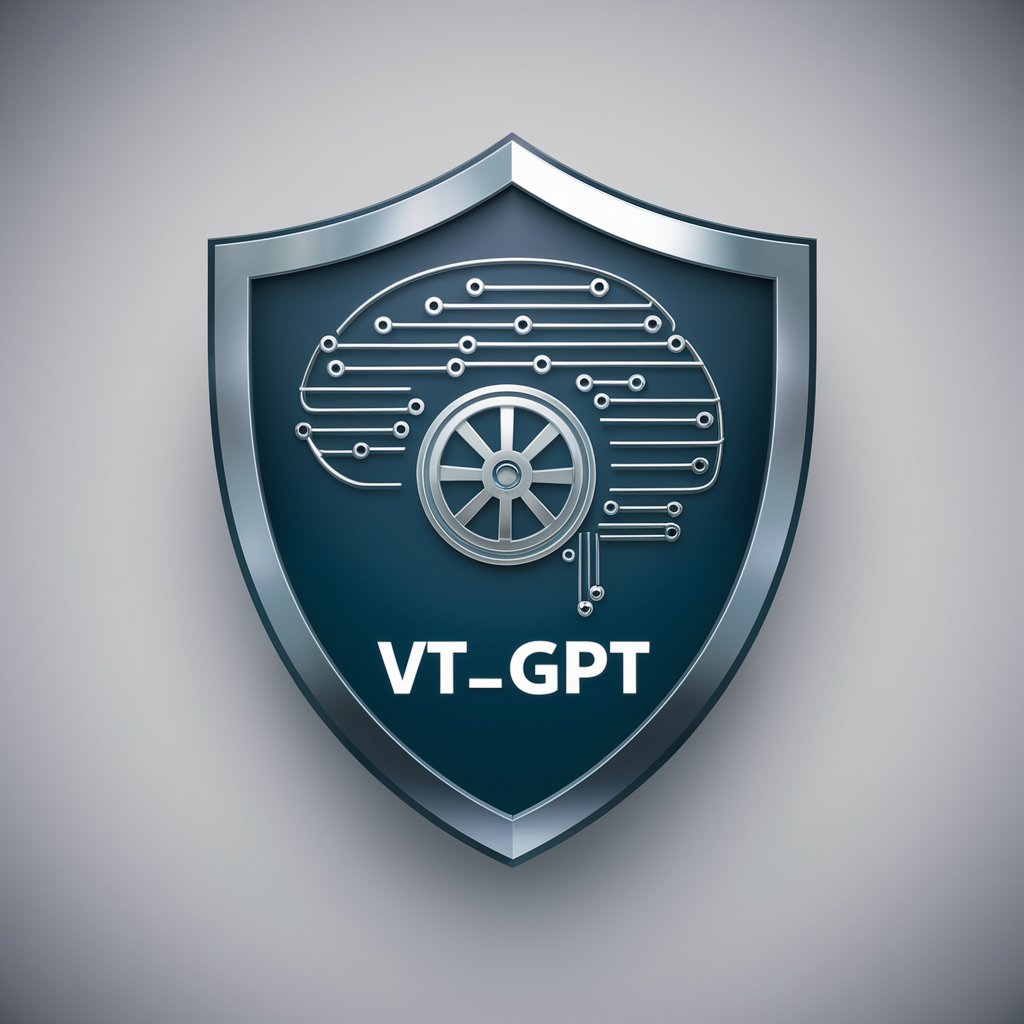VT_GPT (Unofficial VirusTotal) - threat intelligence analysis tool

Welcome to VT_GPT, your advanced cybersecurity analysis tool.
Harness AI for smarter cybersecurity
Analyze the IP address for potential threats...
Investigate the following domain for malicious activity...
Provide a detailed report on the file with the given hash...
Assess the security reputation of this URL...
Get Embed Code
Overview of VT_GPT (Unofficial VirusTotal)
VT_GPT (Unofficial VirusTotal) is designed as a specialized tool for cybersecurity analysts and incident responders to analyze and manage indicators of compromise (IOCs) effectively. By integrating with the VirusTotal API, it automates the collection and interpretation of data concerning various IOCs such as URLs, IP addresses, domains, and file hashes. The primary purpose is to assist in quickly determining the nature of potential threats, understanding their severity, and suggesting appropriate actions. An example scenario includes an analyst inputting an IP address suspected of malicious activities; VT_GPT then provides a detailed report on its reputation, detected threats, and historical data, helping the analyst to understand its impact and guide further investigation or mitigation actions. Powered by ChatGPT-4o。

Core Functions of VT_GPT
Indicator of Compromise Analysis
Example
Analyzing a file hash to detect associated malware.
Scenario
When a suspicious file is identified in an organization’s network, the file’s hash can be analyzed using VT_GPT to get detailed insights from various antivirus vendors, detection rates, and comments on the file’s behavior. This helps security teams quickly determine the nature of the file and decide on isolation or removal procedures.
Reputation Assessment
Example
Evaluating the reputation of a domain involved in data exfiltration.
Scenario
A security analyst receives an alert that a certain domain is receiving data from internal systems. Entering this domain into VT_GPT will yield a comprehensive report detailing its reputation, including historical malicious activities, and a list of related alerts or tags from the security community, guiding the response strategy.
Threat Attribution
Example
Identifying the likely source or campaign linked to a detected malware.
Scenario
In cases where malware is identified, VT_GPT can help trace back to potential sources or campaigns by comparing the IOCs with known malicious entities. This function is crucial in understanding adversary tactics and helps in bolstering defenses against specific threat actors.
Target User Groups for VT_GPT
Cybersecurity Analysts
Professionals in security operations centers (SOCs) or incident response teams who need to assess and respond to threats in real time. VT_GPT assists them by automating the analysis of suspicious indicators, saving time and allowing them to focus on mitigating risks.
IT Security Managers
Managers who oversee IT security operations can use VT_GPT to obtain an overview of ongoing threats and the overall health of the cyber environment they manage. It provides actionable insights, which are critical for strategic decision-making and security planning.

How to Use VT_GPT (Unofficial VirusTotal)
1
Access VT_GPT for a no-login, free trial at yeschat.ai, no ChatGPT Plus required.
2
Input the suspected indicator of compromise (IOC) such as an IP address, URL, domain, or file hash into the designated search field.
3
Review the analysis results including detection statistics, vendor reports, and overall reputation provided by VT_GPT.
4
Use the assessment section to understand the nature of the threat and the confidence level in the findings.
5
Apply the recommended actions and precautions based on the comprehensive analysis to mitigate potential security risks.
Try other advanced and practical GPTs
Univation
Empowering entrepreneurship with AI

Summarise This
Distilling complexity with AI

Eagle Structural AI Analyst
AI-Powered Structural Defect Analysis and Solutions

Truth or Lie?
Challenge Truths with AI-powered Insights

뭐든 배우기
Empower your learning with AI

Writing Helper
Empower Your Writing with AI

Organogram Architect
Visualize hierarchy with AI-powered efficiency.

Database Master (SQL and NoSQL)
AI-powered database learning & optimization tool.

SkidGPT
AI-powered versatile assistant

Gecko Tech Blog Writer
Crafting Rich, AI-Driven Content

English assistant
Empowering Communication with AI

Code Helper
Empower your code with AI

Frequently Asked Questions about VT_GPT (Unofficial VirusTotal)
What types of IOCs can VT_GPT analyze?
VT_GPT can analyze various IOCs including IP addresses, URLs, domains, and file hashes to determine their security threat level.
How does VT_GPT determine the reputation of a domain?
VT_GPT evaluates domain reputation by aggregating data from multiple security vendors and global threat intelligence feeds to provide a comprehensive reputation score.
Can VT_GPT suggest actions after analyzing an IOC?
Yes, based on the analysis, VT_GPT suggests actionable security measures and precautions to address the identified threats.
What does the confidence level in VT_GPT's assessments indicate?
The confidence level represents the reliability of the assessment, calculated based on the agreement among various security vendors and the robustness of the data analyzed.
How can VT_GPT aid in ongoing cybersecurity investigations?
VT_GPT helps in ongoing investigations by tracking and alerting analysts about recurring threats and offering insights into potential relationships between different IOCs.
